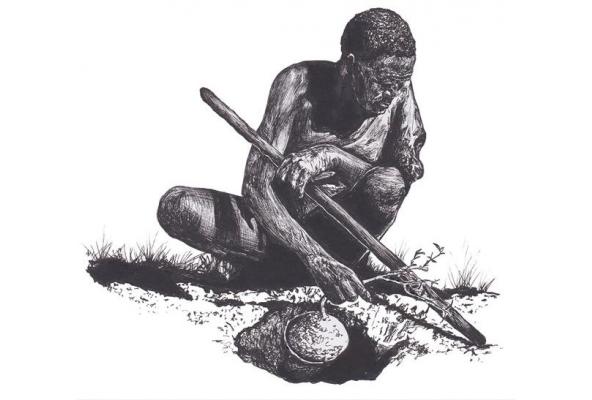“What makes the desert beautiful is that somewhere it hides a well.”
- Antoine de Saint-Exupery
Finding water in the desert is perhaps one of the most challenging of the core survival skills of this environment, perhaps even more difficult than making shelter in the frozen North or conjuring fire in a rainforest, as it requires either deep ancient knowledge or total reliance on modern materials.
The masters of desert survival in Namibia are without a doubt the San Bushmen, whom, over the centauries have been marginalised and pushed to the barely habitable edges of the desert; and have by necessity learned to procure water from this parched landscape. Their ancestral knowledge is so great that they can recognise the thin wilted leaf of a water-rich tuber from many meters away. (In her book The Harmless People, Elizabeth Marshall Thomas mentions how a Bushman child will have learned to identify and understand the properties of more than three hundred plants by the time they reach adulthood).
In the Kalahari droughts may last many months and traditional waterholes may dry up. When this happened, traditionally the Bushmen used to either use hollow grass straws to extract water trapped in the crooks of tree branches or dig sip wells.
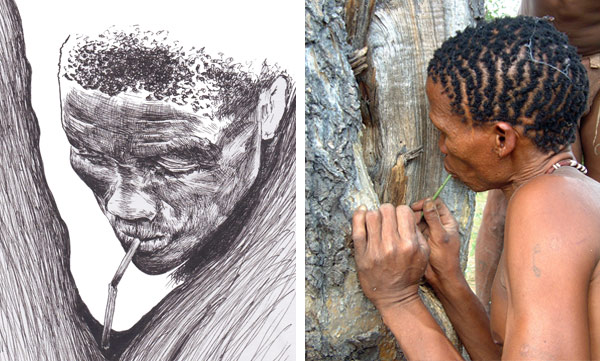

To create a sip well, a Bushman will dig a deep hole, down to where where the sand is damp. Into this hole he will pack a bundle of dried grass and insert a long hollow grass stem; and then the hole is back-filled to create a vacuum. By sucking hard he can get the moisture from the damp sand to condense on the grass and eventually yield water.
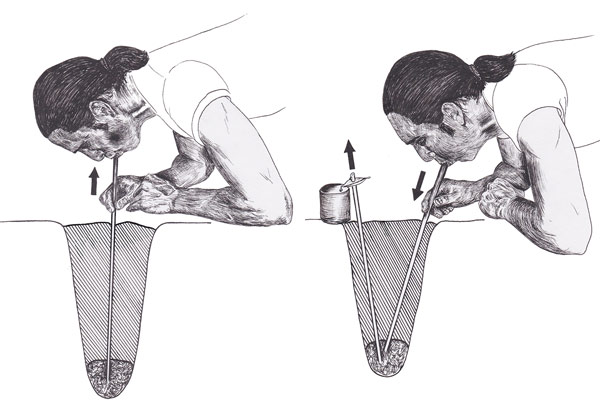

When the grass is saturated, it is sometimes possible to blow down a straw and force the water back up a second one, where traditionally it was collected in an empty ostrich egg.


Without this level of desert bushcraft and botanical knowledge, finding water to drink in the desert is incredibly difficult, especially without any man-made materials. In fact, without any deep indigenous knowledge, the soldiers during selection for the Rhodesia Selous Scouts were taught to rely on wringing fluid from the porous intestines of herbivorous mammals that they had just shot or trapped, when they could not find water anywhere else in the arid bushvelt.
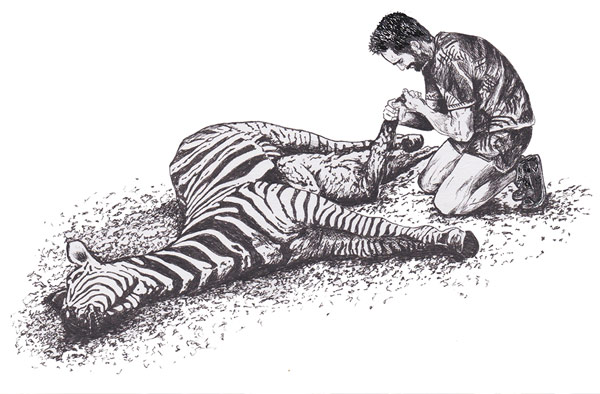

Selous Scout wringing fluid from zebra
With the aid of man-made plastic it is possible to cheat the desert eco-system, but there are tricks that have to be employed to making this successful. One of the great survival myths is the ‘solar still’ where a pit is dug and covered with plastic sheeting; creating an inverted cone by rolling a stone onto the center of the sheet, with a vessel is placed below to catch the drips. This technique doesn’t work efficiently, as the water is also continuously evaporating from the collecting vessel… trust me; I’ve tried many times! I don’t know why it still proliferates every survival handbook.
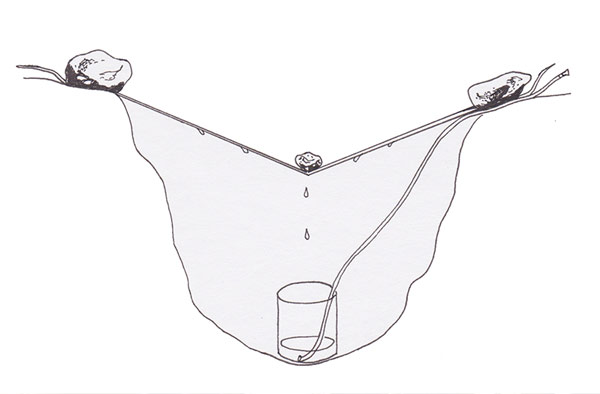

However, there is one technique that works very well and is referred to as a transpiration bag. It involves making a tree do the work of finding water for you by placing a plastic bag over a whole branch and tying it off, creating a sealed unit, where the xylem conducts water from the tree’s deep roots up to the leaves, where it transpires through them, to eventually condense on the inside of the plastic. Obviously you need to ensure that the bag is not pierced or damaged otherwise it is not a closed system… and the big secret is that the bag MUST be clear, as if you use a black bag the leaves think it is night-time and don’t transpire. The leaves need the sunlight to trigger photosynthesis and hence moisture giving transpiration. It is also worth tying off the corner where you will be collecting the fluid, especially if you don’t know the tree species, to stop leaves, insects, etc. from potentially contaminating the water you are harvesting.


I hope you never need to employ any of the skills that I’ve talked about in this blog, but if you are ever going to make a big desert driving trip, through Africa, America or Australia, it might be worth throwing in a roll of clear plastic bin bags… you just never know!
© Ben McNutt – Words, photographs and Illustrations
